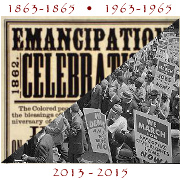A central fact obscured by post-Civil War mythologies is that the northern U.S. states were deeply implicated in slavery and the slave trade right up to the war.
The slave trade in particular was dominated by the northern maritime industry. Rhode Island alone was responsible for half of all U.S. slave voyages. James DeWolf and his family may have been the biggest slave traders in U.S. history, but there were many others involved. For example, members of the Brown family of Providence, some of whom were prominent in the slave trade, gave substantial gifts to Rhode Island College, which was later renamed Brown University.
While local townspeople thought of the DeWolfs and other prominent families primarily as general merchants, distillers and traders who supported ship-building, warehousing, insurance and other trades and businesses, it was common knowledge that one source of this business was the cheap labor and huge profits reaped from trafficking in human beings.
The North also imported slaves, as well as transporting and selling them in the south and abroad. While the majority of enslaved Africans arrived in southern ports–Charleston, South Carolina was the largest market for slave traders, including the DeWolfs—most large colonial ports served as points of entry, and Africans were sold in northern ports including Philadelphia, New York, Boston, and Newport, Rhode Island.
The southern coastal states from Georgia, South Carolina, North Carolina, Virginia and Maryland were therefore home to the vast majority of enslaved persons. But there were slaves in each of the thirteen original colonies, and slavery was legal in the north for over two hundred years. While the northern states gradually began abolishing slavery by law starting in the 1780s, many northern states did not act against slavery until well into the 19th century, and their laws generally provided only for gradual abolition, allowing slave owners to keep their existing slaves and often their children. As a result, New Jersey, for instance, still had thousands of persons legally enslaved in the 1830s, and did not finally abolish slavery by law until 1846. As late as the outbreak of the Civil War, in fact, there were northern slaves listed on the federal census.
In the south, men, women and children were often forced to work on large plantations, which could employ the labor of hundreds or even thousands of enslaved Africans. In the north, farms were smaller and those farmers who owned slaves would generally have only a small number. However, it was fairly common during slavery in the north to find one or two slaves in the households of farmers, merchants, ministers, and others.
Sources: “Africans in America Part Two: Revolution.” WGBH Interactive. http://www.pbs.org/wgbh/aia/part2/2narr1.html; David Eltis, Stephen D. Behrendt, David Richardson, and Herbert S. Klein, eds., The Trans-Atlantic Slave Trade: A Database on CD-ROM (Cambridge, 1999); Joanne Pope Melish, Disowning Slavery: Gradual Emancipation and “Race” in New England, 1780-1860 (Ithaca, N.Y.: Cornell University Press, 1998).


